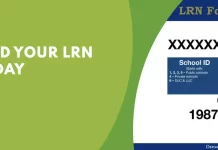In the bustling world of Philippine public schools, where the dreams of countless young minds take flight, there lies a complex tapestry of challenges in academic competence. Let’s embark on a journey, shedding light on the experiences, triumphs, and hurdles faced by students in our public education system.
Navigating the Educational Landscape
The academic journey in Philippine public schools is diverse and dynamic. We witness students’ resilience in striving for excellence despite navigating an intricate web of challenges. The hurdles are as varied as the students’ dreams, from crowded classrooms to resource limitations.
The Struggle for Competence
While pursuing academic competence is universal, our public school students face unique struggles. Unfortunately, incompetent and lazy teachers are sometimes a problem in public schools. Limited access to educational resources, outdated facilities, and, sometimes, insufficient teacher support pose significant obstacles. These challenges cast shadows on the path to proficiency.
Overcoming Resource Gaps
One of the central predicaments is the glaring gap in resources. Many public schools lack updated textbooks, modern teaching aids, and basic classroom infrastructure. As a result, students need help with outdated materials, hindering their ability to keep pace with a rapidly evolving educational landscape.
The Role of Dedicated Educators
Amidst these challenges, the unsung heroes emerge – our dedicated educators. Teachers in public schools often go above and beyond, striving to provide quality education with limited means. Their efforts play a pivotal role in shaping students’ academic competence instilling hope and resilience.
A Catalyst for Change
The community’s involvement is crucial in transforming these challenges into opportunities. Support from parents, local leaders, and community members can bridge resource gaps and create an environment where academic excellence is not just a dream but a tangible reality.
Embracing Solutions for a Brighter Future
Embracing holistic solutions is imperative to enhance academic competence. Advocacy for increased funding, curriculum enhancements, and strategic resource allocation are crucial steps. Moreover, fostering a collaborative environment that encourages innovation and embraces diversity can pave the way for a brighter educational future.
A Call to Action
The story of academic competence in Philippine public schools is a call to action. Though marked by challenges, each student’s journey carries the potential for success. By acknowledging these challenges and working collectively towards viable solutions, we can weave a narrative where every student thrives, and academic competence becomes a shared achievement.
Frequently Asked Questions (FAQs)
Why is academic competence crucial for students in public schools?
Academic competence is crucial as it forms the foundation for future success, empowering students with the knowledge and skills needed for personal and professional growth.
How can communities actively contribute to improving academic competence in public schools?
Communities play a vital role by fostering a supportive environment, participating in educational initiatives, and collaborating with educators to address challenges and enhance academic competence.
What initiatives can educators and stakeholders take to address issues of incompetence and laziness among teachers in public schools?
Initiatives include continuous professional development, mentorship programs, and creating a culture that values ongoing improvement to counteract issues of incompetence and laziness.
How can parents support their children’s academic journey in the public school?
Parents can support their children by being actively involved in their education, providing a conducive learning environment at home, and collaborating with teachers to address any challenges.
Are there successful examples of overcoming resource gaps in public schools to enhance academic competence?
Yes, some communities have successfully addressed resource gaps through innovative fundraising, partnerships with local businesses, and advocacy for increased government funding in public education.
What role does technology play in addressing challenges related to academic competence in public schools?
Technology can be a powerful tool for bridging resource gaps and facilitating remote learning, providing opportunities for students to access educational materials and support.
How can policymakers contribute to creating a more supportive and effective public school system?
Policymakers can contribute by advocating for comprehensive educational reforms, allocating sufficient funding, and developing policies prioritizing teacher training and student well-being.
Are there success stories of students overcoming challenges and excelling academically in the public school system?
Absolutely! Many students have overcome challenges through resilience, support from educators and communities, and access to quality educational resources, showcasing the potential for success in the public school system.
What steps can educators and policymakers take to ensure that academic competence is inclusive and accessible to all students, regardless of background or socioeconomic status?
Steps include
• Promoting equal access to resources,
• Implementing inclusive teaching methods and
• Addressing socioeconomic disparities through targeted educational interventions.
How can public awareness and advocacy improve academic competence in Philippine public schools?
Public awareness and advocacy are crucial in mobilizing support, influencing policy changes, and fostering a community-driven approach to enhance academic competence in Philippine public schools.











